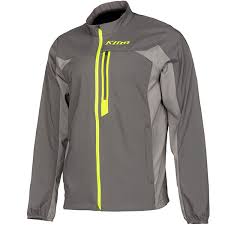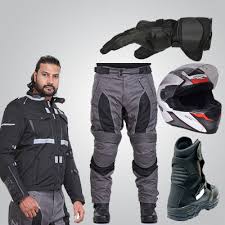Enhance Your Ride with an Anti-Fog Motorcycle Helmet

The Importance of Anti-Fog Motorcycle Helmets
Riding a motorcycle can be an exhilarating experience, but it also comes with its challenges, especially when it comes to visibility. One common issue that many motorcyclists face is helmet visor fogging up, which can severely impair vision and compromise safety on the road.
This is where anti-fog motorcycle helmets come into play. These specially designed helmets feature technology that helps prevent visor fogging, ensuring clear visibility for the rider in various weather conditions.
Anti-fog helmets typically use a combination of ventilation systems, anti-fog coatings, and moisture-wicking materials to reduce condensation buildup on the visor. This allows riders to maintain a clear line of sight, even in cold or humid conditions.
Having an anti-fog motorcycle helmet is crucial for safety on the road. Clear visibility is essential for spotting potential hazards, reacting quickly to changing road conditions, and maintaining overall situational awareness while riding.
Whether you are a seasoned rider or a beginner just starting out, investing in an anti-fog motorcycle helmet can greatly enhance your riding experience and ensure a safer journey on the road.
Stay safe, stay visible – choose an anti-fog motorcycle helmet for your next ride!
Seven Essential Tips for Maintaining a Fog-Free Motorcycle Helmet
- Ensure proper ventilation in your helmet to reduce fogging.
- Use an anti-fog visor or apply an anti-fog coating to your visor.
- Avoid breathing directly into your helmet by positioning the chin bar slightly down when stopped.
- Keep your helmet clean, especially the visor, to prevent fog buildup.
- Consider using breath deflectors or nose guards to direct exhaled air away from the visor.
- Ride with your visor slightly cracked open for improved airflow and reduced fogging.
- If possible, choose a helmet with Pinlock inserts for advanced anti-fog protection.
Ensure proper ventilation in your helmet to reduce fogging.
Ensuring proper ventilation in your motorcycle helmet is a crucial tip to reduce fogging and maintain clear visibility while riding. Adequate airflow helps to prevent moisture buildup inside the helmet, reducing the chances of the visor fogging up. By keeping vents open and allowing air to circulate freely, riders can enjoy a clearer line of sight and improved safety on the road. Remember, good ventilation is key to a fog-free ride!
Use an anti-fog visor or apply an anti-fog coating to your visor.
To prevent visor fogging and ensure clear visibility while riding, it is advisable to use an anti-fog visor or apply an anti-fog coating to your helmet visor. These solutions help reduce condensation buildup on the visor, allowing riders to maintain a clear line of sight in various weather conditions. By incorporating this simple tip into your motorcycle gear routine, you can enhance safety on the road by improving visibility and ensuring a smoother riding experience.
Avoid breathing directly into your helmet by positioning the chin bar slightly down when stopped.
To prevent fogging up your motorcycle helmet visor, it’s advisable to avoid breathing directly into the helmet. One effective tip is to position the chin bar slightly down when stopped. By doing so, you can redirect your breath away from the visor, reducing the chances of condensation buildup and ensuring clearer visibility while riding. This simple adjustment can make a significant difference in maintaining a clear line of sight and enhancing safety on the road.
Keep your helmet clean, especially the visor, to prevent fog buildup.
To prevent fog buildup on your anti-fog motorcycle helmet, it is essential to keep your helmet clean, particularly the visor. Regularly cleaning the visor with a mild soap and water solution can help remove dirt, debris, and oils that can contribute to fogging. Additionally, using a microfiber cloth to gently wipe the visor dry can ensure optimal visibility while riding. By maintaining a clean helmet and visor, you can effectively reduce the risk of fogging and enhance safety on the road.
Consider using breath deflectors or nose guards to direct exhaled air away from the visor.
When it comes to combating visor fogging on your motorcycle helmet, a helpful tip is to consider using breath deflectors or nose guards. These accessories can effectively redirect exhaled air away from the visor, reducing the chances of condensation buildup and ensuring clear visibility while riding. By incorporating these simple yet effective solutions into your gear setup, you can enhance your overall riding experience and stay safe on the road.
Ride with your visor slightly cracked open for improved airflow and reduced fogging.
Riding with your motorcycle helmet visor slightly cracked open can be a simple yet effective tip to enhance airflow and reduce fogging. By allowing a small gap in the visor, you can promote better ventilation inside the helmet, which helps to prevent moisture buildup and maintain clear visibility. This small adjustment can make a significant difference, especially in challenging weather conditions, ensuring a safer and more comfortable ride on the road.
If possible, choose a helmet with Pinlock inserts for advanced anti-fog protection.
When selecting an anti-fog motorcycle helmet, opting for one with Pinlock inserts can provide advanced protection against fogging. Pinlock inserts are designed to create a dual-pane system that effectively prevents condensation buildup on the visor, ensuring clear visibility for the rider in various weather conditions. By choosing a helmet with Pinlock inserts, you can enhance your riding experience and maintain optimal visibility on the road, promoting safety and confidence while enjoying your motorcycle journeys.









